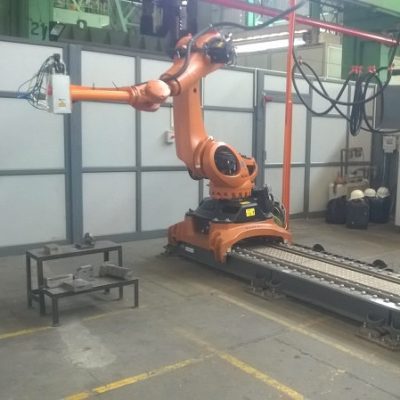Laser Surface Hardening of Cast Iron

Cast irons have found increased usage in various industrial applications due to their good casting properties, machinability and cost effectiveness as compared to other alloys. They offer a very good combination of toughness and strength as well as very good sliding and shock/vibration damping performance.
Due to these favorable material properties cast irons are used in many components ranging from shafts, gears, axles, automotive forming dies, steel mill rollers ,agricultural and mining equipment just to name a few. One of the most desired properties for components made of cast iron is getting good wear resistance. Wear resistance of cast irons can be increased by surface hardening methods.
In this regard Laser surface hardening has proven to be a very useful and robust technology to achieve desired hardening of cast irons.
Both Grey Cast iron and Ductile cast iron can be hardened with lasers but some are more suitable for hardening than others. If done properly, surface hardness in the range of 60-65 HRC (or more) can be consistently achieved in laser hardening with approximately ~ 1 mm case depth.
Also check: Conventional / Induction Hardening vs Laser Hardening
Let’s look at how lasers can be used for hardening of cast irons and the advantages they offer as compared to conventional hardening techniques:
Laser hardening is a very precise , closed loop temperature controlled process where a laser beam of great intensity is scanned over the surface to be hardened.
- Through use of pyrometer and/or thermal camera precise temperature is maintained over the surface which gives a very uniform case depth (typically 1mm) after hardening, this is sometimes difficult to achieve with conventional hardening methods.
- The micro structure of laser hardened cast iron shows an optimized combination of fine martensite as well as graphite when done correctly resulting in a very hard surface (due to fine martensite) as well retaining the excellent properties of graphite.
- Since the bulk of the material itself acts as a heat sink , laser hardening is a “self quenching” process , this has many advantages such as no deformation and very little to no post processing after hardening.
- After laser hardening you end up with a very uniformly high hardened surface and the soft and tough core of the bulk material thus giving your components best of both mechanical properties.
- Laser hardened components are less prone to cracks because of the precise heat input and temperature control thus giving a longer life to the components.
High power diode lasers with a uniform intensity profile are best suitable for hardening of cast irons giving significant advantage in terms of automation, robustness, and cost of running as compared to conventional hardening process such as furnace hardening, induction hardening etc.
Any queries ? Feel free to contact us.
Laser Hardening Machine
Hardening is done on special die’ for forming various car BIW parts like side doors, rear door etc. This consists of a KUKA six axis robot of 60 kg payload capacity mounted on linear track which can travel up to 5 meters length.

